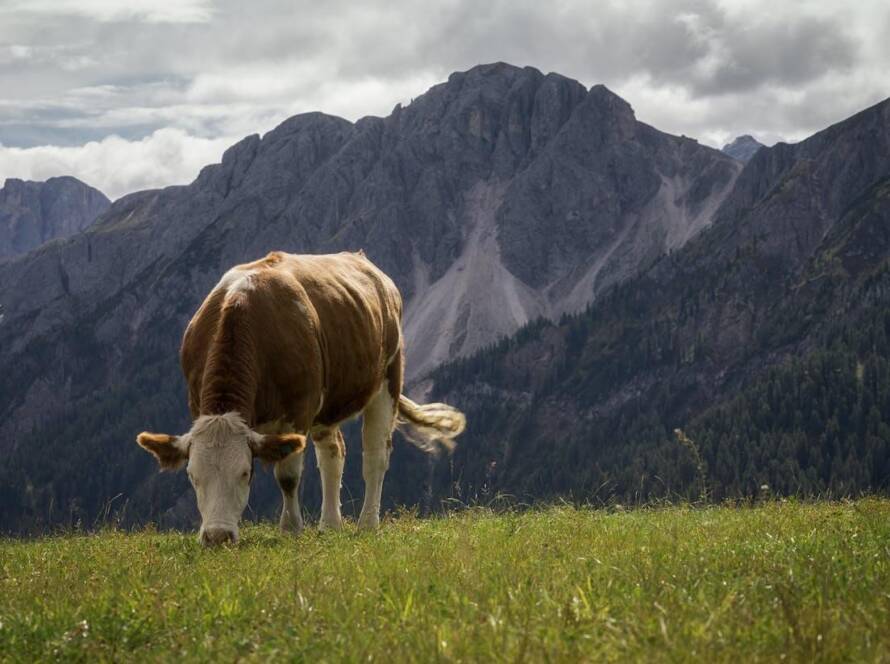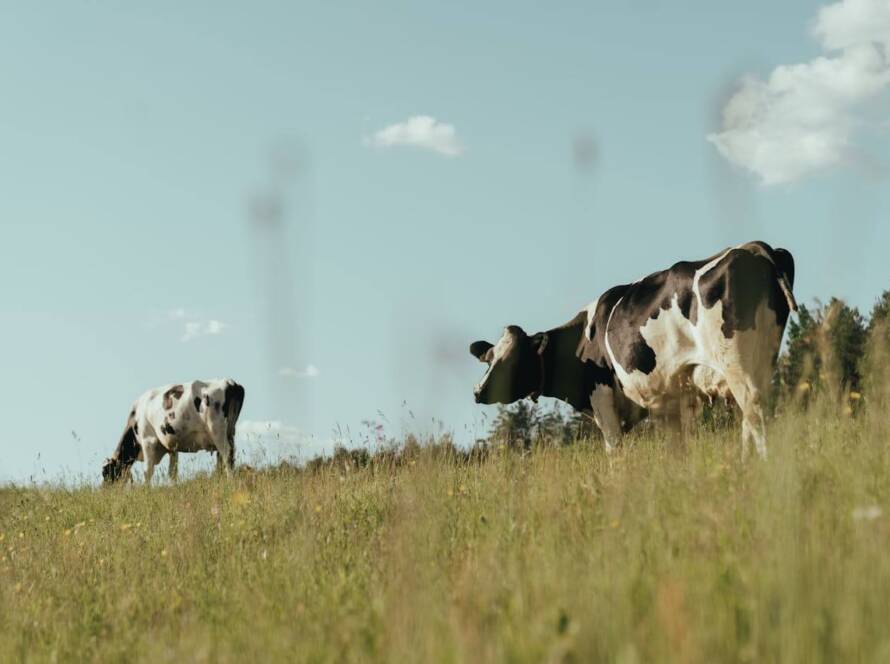In recent years, grass-fed beef has surged in popularity, touted for its health benefits, sustainable farming practices, and ethical treatment of animals. For many, choosing grass-fed beef isn’t just about selecting a type of meat—it’s about supporting a farming method that’s better for the environment, animals, and consumers. But what does the journey of grass-fed beef really entail, from the pasture to the plate? In this article, we’ll explore the life of a grass-fed cow, the stages it goes through, and how the process results in the high-quality, flavorful beef that ends up on your table.
The Birth and Early Days of a Grass-Fed Calf
Every journey starts with the birth of a calf, and for grass-fed beef, that journey begins on open pasture. Cows that produce grass-fed beef are often raised on smaller, family-owned farms, where the cattle are given ample space to roam freely and graze. Shortly after birth, calves nurse from their mothers and remain close to the herd, learning to graze and becoming accustomed to a diet of grass.
Unlike grain-fed cattle, which are typically weaned early and moved to feedlots, grass-fed cattle remain on pasture throughout their entire lives. This means that from the moment they’re born, they begin the process of consuming a natural diet, primarily composed of grass, forage, and other plant materials found in their environment.
The first few months are crucial, as the calves grow and develop the ability to fully digest grass, ensuring they’ll thrive on this diet for the remainder of their lives.
Grazing on Pasture: A Natural Diet
The hallmark of grass-fed beef is that the cattle spend their lives grazing on grass. This diet is fundamental to the overall health of the cattle and the quality of the beef they produce. Grazing allows the cattle to consume a diet that is rich in fiber and nutrients, which leads to leaner meat with a more complex flavor profile than grain-fed beef.
Grass-fed cattle graze in rotational pastures, moving from one section of grassland to another to allow the grass to regenerate and the soil to recover. This method is known as rotational grazing, and it’s a key component of regenerative agriculture. Not only does this practice ensure that the cattle have access to fresh grass throughout the year, but it also contributes to the health of the ecosystem by promoting biodiversity, improving soil quality, and reducing erosion.
In the colder months, when grass isn’t as readily available, farmers often supplement the cattle’s diet with hay or silage (preserved grasses), ensuring they continue to consume a natural, forage-based diet even when pasture conditions are less ideal.
Natural Growth: No Hormones or Antibiotics
One of the primary differences between grass-fed and conventionally raised cattle is that grass-fed cattle are raised without the use of growth hormones or routine antibiotics. In conventional feedlots, cattle are often given hormones to accelerate their growth, allowing them to reach market weight more quickly. Additionally, the confined and crowded conditions of feedlots can lead to the spread of disease, so cattle are frequently administered antibiotics as a preventive measure.
In contrast, grass-fed cattle grow at a natural pace, without artificial growth stimulants. Because they are raised in open pastures, where they have plenty of room to roam, there’s less risk of disease spreading, which minimizes the need for antibiotics. The result is meat that is free from the residues of growth hormones and antibiotics, appealing to health-conscious consumers who prefer minimally processed, natural foods.
The Harvesting Process: Ethical and Humane Practices
After spending around 18 to 24 months grazing on pasture, grass-fed cattle are typically ready for harvest. The process of slaughtering grass-fed cattle is often carried out in smaller, local facilities that prioritize humane practices. Ethical treatment during the harvesting process is a key consideration for many grass-fed operations.
At these facilities, great care is taken to minimize stress on the animals during transport and handling, as stress can negatively affect the quality of the meat. Farmers and processors often work closely to ensure that the animals are treated with respect and compassion throughout the entire process.
Humane slaughter practices are not just about ethics—they also play a role in the quality of the final product. Cattle that are stressed during their final moments produce tougher meat due to a process called glycogen depletion. By reducing stress, farmers ensure that the meat remains tender and flavorful, while also adhering to ethical principles.
The Aging Process: Enhancing Flavor and Tenderness
Once the cattle are harvested, the beef goes through an important stage known as aging. Aging is a critical step that enhances both the flavor and tenderness of the meat. There are two main types of aging: wet aging and dry aging.
- Wet Aging: The beef is sealed in vacuum-packed bags and stored in refrigeration for several weeks. This allows the natural enzymes in the meat to break down connective tissues, resulting in a more tender product.
- Dry Aging: The beef is hung in a temperature- and humidity-controlled environment for an extended period, usually ranging from a few weeks to several months. During this time, moisture evaporates from the meat, concentrating the flavor and further tenderizing the beef. Dry-aged beef often has a more intense, robust flavor, which many steak enthusiasts prefer.
Grass-fed beef, especially when dry-aged, develops a distinct flavor that is often described as more “earthy” or “gamey” compared to the milder taste of grain-fed beef. The aging process is a crucial part of delivering a premium product to consumers.
From the Butcher to Your Plate: Cooking Grass-Fed Beef
After the aging process is complete, the beef is ready to be butchered and packaged for sale. Grass-fed beef is often sold directly to consumers through local farms, farmers’ markets, or specialty grocery stores. It may also be delivered through subscription services that connect consumers with sustainable, local producers.
When it comes to cooking grass-fed beef, there are a few key differences to keep in mind. Because grass-fed beef is leaner than grain-fed beef, it requires careful cooking to avoid overcooking and drying it out. Lower cooking temperatures and shorter cooking times are recommended to preserve the natural tenderness and flavor of the meat. Marinating the beef or using cooking methods like slow roasting can also help enhance its texture and taste.
Conclusion: A Journey Rooted in Sustainability and Quality
The journey of grass-fed beef, from pasture to plate, is one that emphasizes natural processes, humane treatment of animals, and environmental sustainability. Cattle are allowed to graze freely, consuming a natural diet that contributes to their health and well-being, while also supporting the ecosystems in which they are raised. By the time grass-fed beef reaches your plate, it has undergone a thoughtful and careful process that ensures a high-quality, flavorful, and nutritious product.
For consumers who value ethically raised, sustainable, and health-conscious food, grass-fed beef is more than just a meal—it’s a choice that supports a better way of farming and eating. Whether you’re savoring a perfectly cooked steak or preparing a wholesome family meal, knowing the journey your beef has taken adds depth to every bite.


